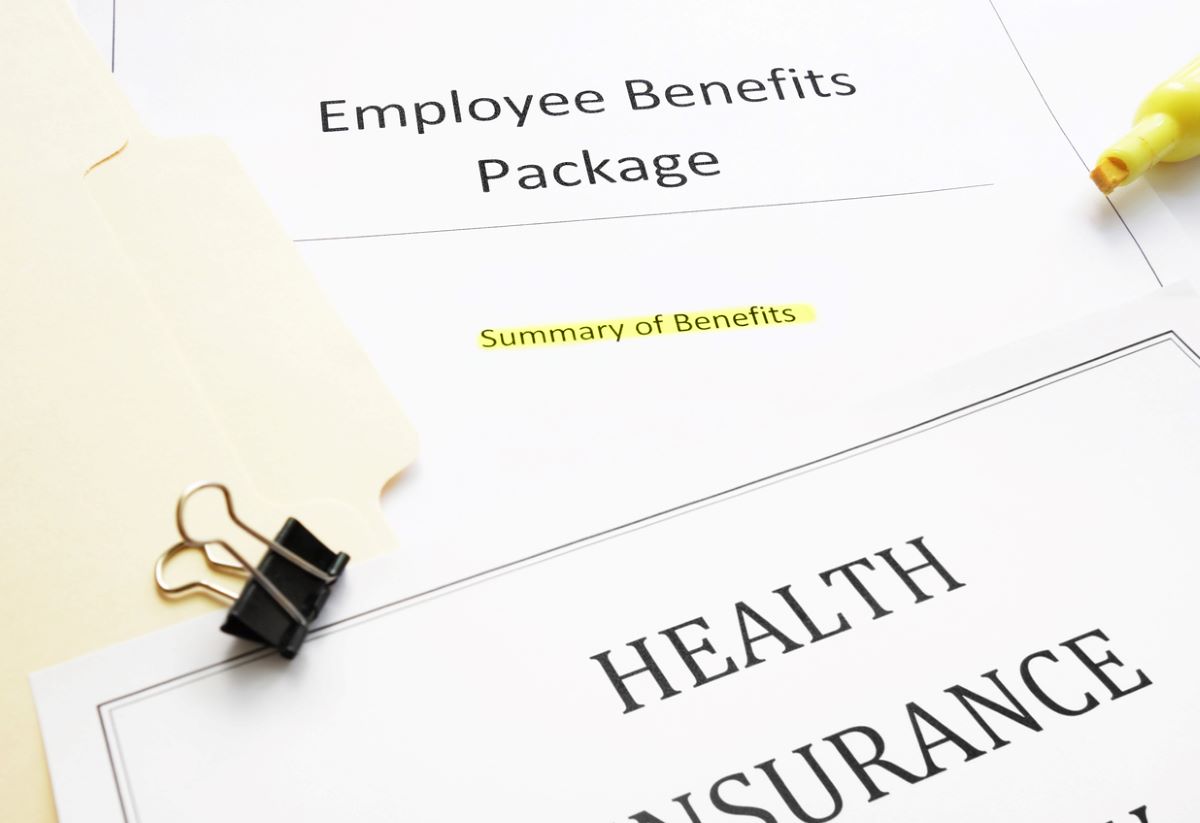Report explores what ‘being covered’ means to employers and employees
The Aflac WorkForces Report finds only 3 in 5 American workers are confident they will be covered in the event of a serious illness.

There is no denying the American workforce has felt the impact of more than 18 months of uncertainty related to the COVID-19 pandemic, especially around the health care landscape. That said, the 2021-2022 Aflac WorkForces Report examines benefits trends and attitudes to help identify and understand ongoing challenges from the employer and employee perspectives. The report’s introduction states, “This year, more than ever, we’re hopeful that the findings help bridge divides related to workplace benefits and contribute to improving the health and prosperity of the American workforce.”
The 11th annual research study, conducted by Kantar, captured responses from 1,200 employers and 2,000 employees across the U.S. in various industries. Here, some highlights from each of the three sections of the report.
Employee satisfaction (or not) with benefits, COVID-19 response
The first section, The State of Workplace Benefits, examines employee and employer views on benefit offerings, with a key takeaway being that over 70% of American employees report benefits are “highly important” to their overall physical, financial, mental and emotional health and job satisfaction. However, there is a 14% gap between an employers’ perceptions of employee satisfaction with their benefits package (76%), and what employees self-report for satisfaction with benefits (62%).
A report “Pro Tip” recommends, “It is important for employers to understand the value their workforce places on safety measures and their benefits for their overall well-being—especially as many employees face burnout and say their mental health is having a negative influence on their productivity. These gaps in understanding are critical for benefits advisors and employers to be sure they are better equipped to meet their employees’ needs and demands.”
Other takeaways:
- Benefit decisions have been impacted by COVID-19, with almost half of employees purchasing at least one new benefit. Life, critical illness and mental health resources top the list of added benefits. Additionally, 29% of total employees say they have become more aware of health care costs, and 23% say they wish they were offered better options to choose from for health care benefits.
- Supplemental benefits (such as life, dental, vision and accident insurance) are viewed as a core component of a comprehensive benefits program by 51% of American workers. At a time when 9 in 10 employees believe the need for supplemental insurance is increasing, 75% of employers believe offering supplemental insurance helps with retention, and 70% believe it helps with recruitment.
- Employers rank their satisfaction (83% highly satisfied) with their organization’s COVID-19 response and support much higher than employees (67% highly satisfied). The report finds that about 1 in 5 employees indicate they are likely to look for a new job because of their employer’s COVID-19 response.
- While employers hope to invest more in their workforces with increased hiring and offering larger raises, 60% of them indicate observing an increase in benefits costs over the past year, which could negatively impact their operating plans. Despite rising costs, employers plan to keep their existing coverage, and 70% are more likely to offer more types of benefit options than reduce what is available to employees.
Health care benefits education, support
Educating employees around their health care and benefits is a clear opportunity, according to the Aflac WorkForces Report Benefits Enrollment + the Informed Benefits Consumer section. Having access to a benefits advisor during an enrollment period or assistance with navigating key benefits activities, like negotiating medical bills or understanding insurance or benefits, are valuable support to employees.
Additionally, the report finds, “Employees who believe their benefits providers care about them are also more confident in both their coverage and the extent to which their employers also care about them.”
Other takeaways:
- An overwhelming majority of employees engage “cruise control” on benefits decisions by choosing the same benefits year after year. A big challenge may be breaking this decision-making habit to help employees be more informed and engaged in their benefits decisions. A report “Pro Tip” suggests, “Highlight new available options and personal checklists to help employees identify where they have enough coverage and where they could use additional protection.”
- While employers and employees are on the same page with the benefits of their health care policies, there is a disconnect around costs. 72% of employers think employees understand health care costs, while only 59% of employees say that they do.
- More employees are researching and enrolling in their benefits at home than ever before. However, 53% indicated a preference for talking to a benefits advisor in person, compared to a video meeting (31%) or online chat (30%). This may leave those working fully remote at a disadvantage because those employees were 30% less likely to work with a benefits advisor during an enrollment period.
Support for burnout, financial anxieties
With about half of all American workers reporting at least moderate levels of burnout, more support is likely needed from both employers and benefit providers. The Health, Wellness + Power of Benefits section of the Aflac WorkForces Report finds employers can provide additional employee support by providing flexible scheduling and additional paid time off.
Another key finding is around employers’ perceptions of their workforces’ financial resilience and how employees report their actual financial stability. Most employers (81%) believe their employees can financially meet their health care obligations, but 46% of employees indicate they would not be able to pay more than $1,000 in out-of-pocket medical costs. The report reads, “The overwhelming majority of employers believe an employees’ financial stability is a critical component of job performance. This leads to employers knowing it is critical to understand their workforces’ financial fragility and financial anxieties to support their mental health, well-being, productivity and job performance.”
Other takeaways:
- Employers and employees generally agree adequate time and flexibility were provided over the past year for workers to manage their home and personal responsibilities. However, a disconnect arises between 89% of employers believing they provided adequate time and flexibility to employees, while 72% of employees believe they received the support they need.
- In the event of a COVID-19 diagnosis, employees who had additional PTO available to them are more likely to believe their employer cares about their mental and physical health. Similarly, the belief their employer cares about their health is highly correlated with the perception of taking time off, either Paid Time Off (PTO) or a leave of absence, at the company.
- Half of all American workers report having high anxiety about health care costs beyond what insurance covers, with younger generations being most anxious due to higher levels of financial fragility. Because of increased health care costs, most employers have made operating changes to manage the expenses. Increasing their employees’ share of the premium, the primary change, could contribute to employees’ reported financial anxieties around health care and medical costs.
- Again, education and consultation around health care benefits may be an opportunity for employers, as the report finds only 3 in 5 American workers are confident they will be covered in the event of a serious illness and only 1 in 5 believe they will be covered extremely well.






